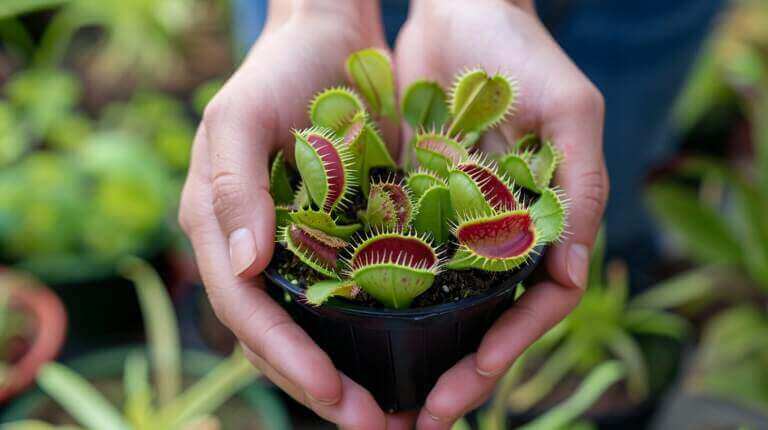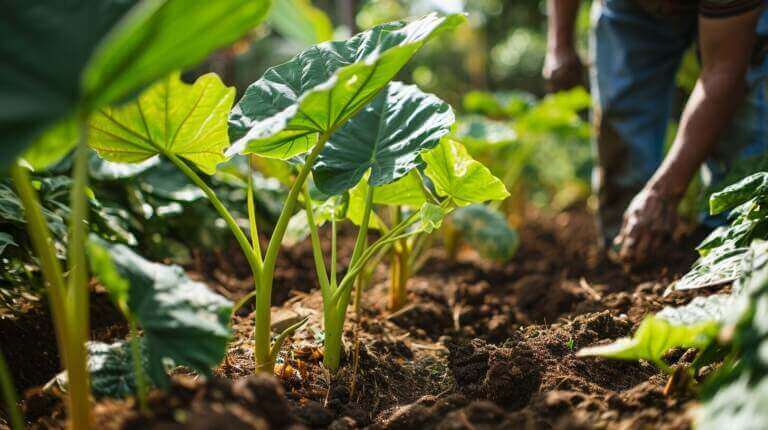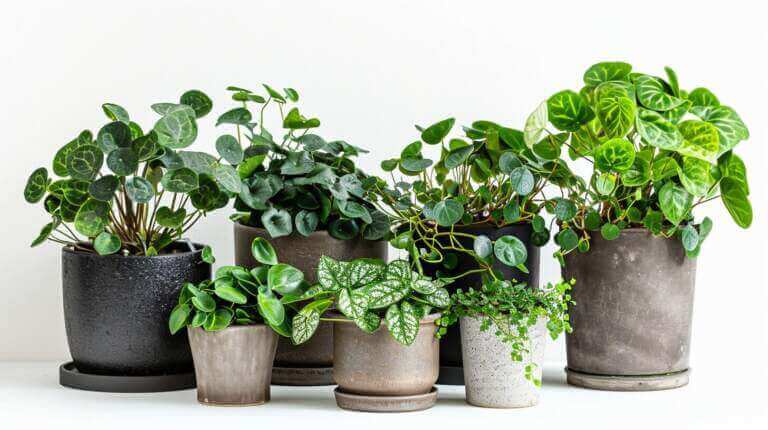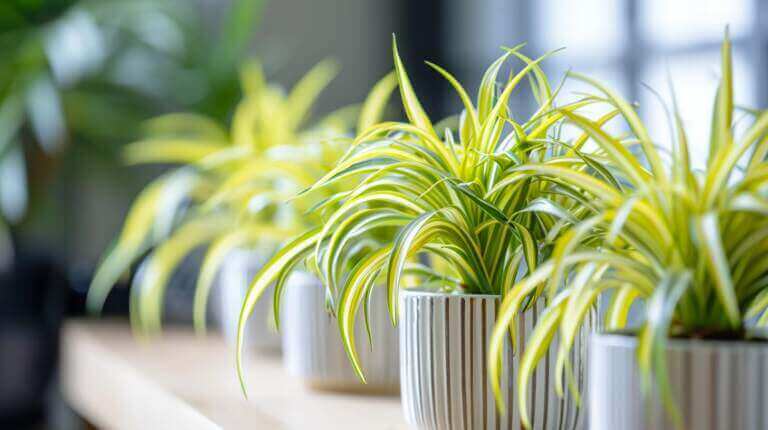How To Propagate African Violets From Leaf Cuttings
Propagating African violets is a fascinating and rewarding practice that allows you to grow new plants from leaf and stem cuttings. In this article, I will guide you through the process of propagating African violets, from preparing the rooting medium to transplanting the new violets. With the right techniques and materials, you can successfully propagate African violets and expand your collection.
Key Takeaways:
- Propagating African violets involves growing new plants from leaf and stem cuttings.
- Prepare the rooting medium using African violet potting mix and add water to moisten it.
- Choose healthy leaves and apply rooting hormone to promote root growth.
- Place the cuttings in pots, provide support, and create a mini greenhouse environment.
- Transplant the new violets into larger pots once they have developed roots and new leaves.
Supplies and Equipment Needed for African Violet Propagation
When it comes to propagating African violets, having the right supplies and equipment is essential. Here are the key items you’ll need to successfully propagate these beautiful plants:
- African violet potting mix: This specialized potting mix provides the ideal growing medium for African violets, with the right balance of nutrients and moisture retention.
- Rooting hormone: A rooting hormone helps stimulate root growth in the cuttings, increasing the chances of successful propagation.
- Sharp knife or pruners: A sharp cutting tool will allow you to make clean, precise cuts on the leaves and stems for propagation.
- Plastic pots: Small plastic pots are perfect for housing the cuttings until they develop roots and can be transplanted.
- Plastic plant tags: These tags can be inserted into the soil to support the leaves and provide stability as the new plants grow.
- Clear plastic bag: Creating a mini greenhouse effect by enclosing the pots in a clear plastic bag helps maintain the necessary humidity for successful root development.
With these supplies and equipment on hand, you’ll be well-equipped to propagate African violets with ease. Now let’s dive into the step-by-step process of propagating these lovely plants.
Table: Required Supplies and Equipment
| Item | Description |
|---|---|
| African violet potting mix | Specialized mix for optimal growth and moisture retention |
| Rooting hormone | Stimulates root growth in cuttings |
| Sharp knife or pruners | For clean and precise cuts |
| Plastic pots | Small containers to house the cuttings |
| Plastic plant tags | Supports the leaves and provides stability |
| Clear plastic bag | Creates a mini greenhouse effect |
Steps to Propagating African Violets Houseplant
Propagating African violets is an exciting process that allows you to create new plants and expand your collection. Follow these steps to successfully propagate African violets:
Step 1: Prepare the rooting medium
Start by creating a suitable rooting medium for your African violet cuttings. Mix African violet potting mix with perlite or vermiculite to improve drainage and aeration. The ideal ratio is one part potting mix to one part perlite or vermiculite.
Step 2: Add water to moisten the mixture
After preparing the rooting medium, add water to moisten the mixture. The goal is to achieve a moist but not soggy consistency.
Step 3: Fill small pots with the rooting medium
Fill small pots with the moist rooting medium, leaving about 1 inch of space from the top. Make small holes in the medium to accommodate the cuttings.
Step 4: Choose and prep the leaves
Select healthy leaves from the middle row of your African violet plant. Trim the leaf stems to about 1 inch in length using a sharp knife or pruners.
Step 5: Apply rooting hormone
Apply rooting hormone to the cut ends of the leaf stems. This hormone will help stimulate root growth.
Step 6: Potting up the cuttings
Gently place the leaf cuttings into the prepared pots, making sure the cut ends are in contact with the rooting medium. Support the leaves with plastic tags or other plant supports to keep them upright.
Step 7: Create a mini greenhouse
To create a favorable environment for root development, cover the pots with a clear plastic bag or clamshell container. This will help retain moisture and create a mini greenhouse effect.
Step 8: Transplant the new violets
After the cuttings have developed roots and new leaves, it’s time to transplant them into larger pots. Use fresh African violet potting mix and gently remove the plants from their original pots. Place each plant into a new pot and fill in the gaps with additional potting mix.
Step 9: Add support and care for the new violets
As the transplanted violets continue to grow, provide support to the leaves and stems if needed. Water the plants when the top inch of soil feels dry, and place them in a location with bright, indirect light. Care for the new violets by maintaining a suitable temperature and humidity level, and fertilize them according to the package instructions.
| Steps | Description |
|---|---|
| 1 | Prepare the rooting medium by mixing African violet potting mix with perlite or vermiculite. |
| 2 | Add water to moisten the rooting medium, aiming for a moist but not soggy consistency. |
| 3 | Fill small pots with the moist rooting medium, leaving space for the cuttings. |
| 4 | Choose healthy leaves from the middle row of the African violet plant and trim the leaf stems. |
| 5 | Apply rooting hormone to the cut ends of the leaf stems to stimulate root growth. |
| 6 | Gently place the leaf cuttings into the prepared pots, supporting the leaves with plastic tags or supports. |
| 7 | Cover the pots with a clear plastic bag or container to create a mini greenhouse effect. |
| 8 | Transplant the new violets into larger pots once they have developed roots and new leaves. |
| 9 | Provide support, proper care, and maintenance for the transplanted violets to ensure their healthy growth. |
Tips for Successful African Violet Leaf Propagation Methods
Successful propagation of African violets requires attention to certain factors such as watering, light, temperature, humidity, and fertilizing. Here are some tips to help you achieve successful propagation and ensure the healthy growth of your African violet plants:
Watering:
Water the cuttings sparingly, making sure the rooting medium is moist but not saturated. Overwatering can lead to root rot and other issues, so it’s important to strike the right balance. Monitor the moisture levels regularly and adjust your watering accordingly.
Light:
Provide bright, indirect light for your cuttings. African violets thrive in well-lit environments, but direct sunlight can scorch their leaves. Place them near a window where they can receive bright light without being exposed to intense sunlight. If natural light is insufficient, you can supplement it with a fluorescent grow light.
Temperature and Humidity:
African violets prefer moderate temperatures ranging from 65 to 75 degrees Fahrenheit (18 to 24 degrees Celsius). Avoid placing them in drafty areas or near heating vents or air conditioning units that can cause extreme temperature fluctuations. Additionally, maintain a humidity level of around 40 to 60 percent. You can increase humidity by placing a tray of water near the plants or using a humidifier.
Fertilizing:
While fertilizing is important for the growth of African violets, it’s crucial not to over-fertilize. Use a balanced fertilizer specifically formulated for African violets and follow the instructions on the package. Over-fertilizing can result in leaf burn and other nutrient-related issues. Always err on the side of caution and apply fertilizer in moderation.
By following these tips, you can create the ideal conditions for successful propagation of African violets. Remember to monitor your plants closely and make adjustments as needed to ensure their continued growth and well-being.
Troubleshooting Common Issues Propagating African Violets From Leaf Cuttings
When propagating African violets, it’s important to be aware of some common issues that may arise. Being able to identify and address these problems promptly will help ensure the success of your propagation efforts. Here are some troubleshooting tips for common issues you may encounter:
Wilting:
If you notice wilting leaves, it could be a sign of underwatering or overwatering. To determine the cause, check the moisture level of the rooting medium. If it feels dry, it’s a sign that the plant needs watering. However, if the soil is consistently wet, you may be overwatering, leading to root rot. Adjust your watering routine accordingly to maintain the right balance of moisture for healthy plant growth.
Yellowing Leaves:
Yellowing leaves can indicate various issues, such as nutrient deficiencies, light exposure, or pest infestations. Assess the overall health of the plant and its growing conditions. If the leaves are yellowing from the bottom up, it could be a natural aging process. However, if the yellowing is widespread or accompanied by other symptoms, it may be a sign of nutrient deficiency or pest infestation. Adjust the fertilization routine or treat the plant for pests to address the issue.
Pest Infestation:
Pests, such as aphids or spider mites, can pose a threat to African violets. They can damage the leaves, stems, and flowers, affecting the overall health of the plant. Regularly inspect the plants for any signs of pests, such as webbing, tiny insects, or distorted leaves. If you spot any pests, treat the plant with insecticidal soap or neem oil. Follow the product instructions carefully and repeat the treatment if necessary to control the infestation effectively.
Root Rot:
Root rot is a common problem caused by overwatering and poor drainage. It can lead to the decay of the plant’s roots, resulting in wilting, yellowing leaves, and stunted growth. To prevent root rot, ensure that the pots have proper drainage holes and that the rooting medium is well-draining. Avoid overwatering and allow the soil to dry out slightly between waterings. If root rot has already occurred, you may need to remove the affected parts and repot the plant in fresh, well-draining soil.
Table:
| Issue | Cause | Solution |
|---|---|---|
| Wilting leaves | Underwatering or overwatering | Check moisture levels; adjust watering routine |
| Yellowing leaves | Nutrient deficiency, light exposure, or pest infestation | Assess growing conditions; adjust fertilization or treat for pests |
| Pest infestation | Aphids or spider mites | Regularly inspect for pests; treat with insecticidal soap or neem oil |
| Root rot | Overwatering and poor drainage | Ensure proper drainage; adjust watering; repot in well-draining soil if necessary |
By addressing these common issues promptly and taking appropriate action, you can help ensure the successful propagation and overall health of your African violets. Remember to monitor your plants regularly and provide them with the care they need to thrive.
Caring for Propagated African Violet Plants
Once you have successfully propagated African violet plants through leaf and stem cuttings, it’s important to provide them with proper care to ensure their health and growth. Here are some key aspects to consider:
Watering:
Proper watering is crucial for the well-being of African violets. Water the plants when the top inch of the soil feels dry to the touch. Avoid overwatering, as excessive moisture can lead to root rot. It’s always better to underwater than to overwater, as African violets prefer slightly drier conditions.
Light:
Provide your propagated African violets with bright, indirect light. They thrive in moderate to high light conditions, but direct sunlight can be too intense and may scorch the leaves. Placing the plants near a north- or east-facing window is usually ideal.
Temperature:
African violets prefer moderate temperatures between 65 to 75°F (18 to 24°C). Avoid exposing them to extreme temperature fluctuations, as this can stress the plants and hinder their growth. Keep the plants away from drafty areas and avoid placing them near heating or cooling vents.
Fertilizing:
Regular fertilization is essential for the healthy growth of African violets. Use a high-quality African violet fertilizer and follow the package instructions for application rates and frequency. Be careful not to over-fertilize, as this can cause nutrient burn and damage the plants. A balanced fertilizer with an N-P-K ratio of 14-14-14 or 20-20-20 is generally suitable.
Repotting:
As your propagated African violets grow and fill their current pots, you may need to repot them into larger containers. Choose a pot that is slightly larger than the current one and use fresh African violet potting mix. Gently remove the plant from its old pot, loosen the roots, and place it into the new pot. Fill any remaining space with potting mix, ensuring that the plant sits at the same depth as before. Water the newly repotted plant thoroughly and place it in its preferred light conditions.
By following these guidelines for caring for your propagated African violet plants, you can enjoy their beauty and vibrant blooms for many years to come.
FAQ
Is propagating African violets difficult?
No, propagating African violets is generally easy and rewarding.
What supplies and equipment do I need for propagation?
You will need African violet potting mix, rooting hormone, a sharp knife or pruners, plastic pots, plastic plant tags, and a clear plastic bag or clamshell container.
What are the steps to propagating African violets?
The steps include preparing the rooting medium, choosing and preparing the leaves, applying rooting hormone, potting up the cuttings, and transplanting the new violets.
What tips can you give for successful propagation?
Tips for successful propagation include watering sparingly, providing bright but indirect light, maintaining moderate temperature and humidity, and avoiding over-fertilizing.
What should I do if I encounter common issues during propagation?
If you encounter issues such as wilting or yellowing leaves, adjust your watering to prevent root rot, and treat pest infestations with insecticidal soap or neem oil.
How do I care for propagated African violet plants?
Care for propagated African violet plants by watering when the top inch of soil feels dry, providing bright but indirect light, maintaining a moderate temperature, fertilizing according to instructions, and repotting when necessary.
Any final thoughts on propagating African violets?
Propagating African violets is a rewarding gardening activity that allows you to expand your collection and even share your success with others through gift-giving.







